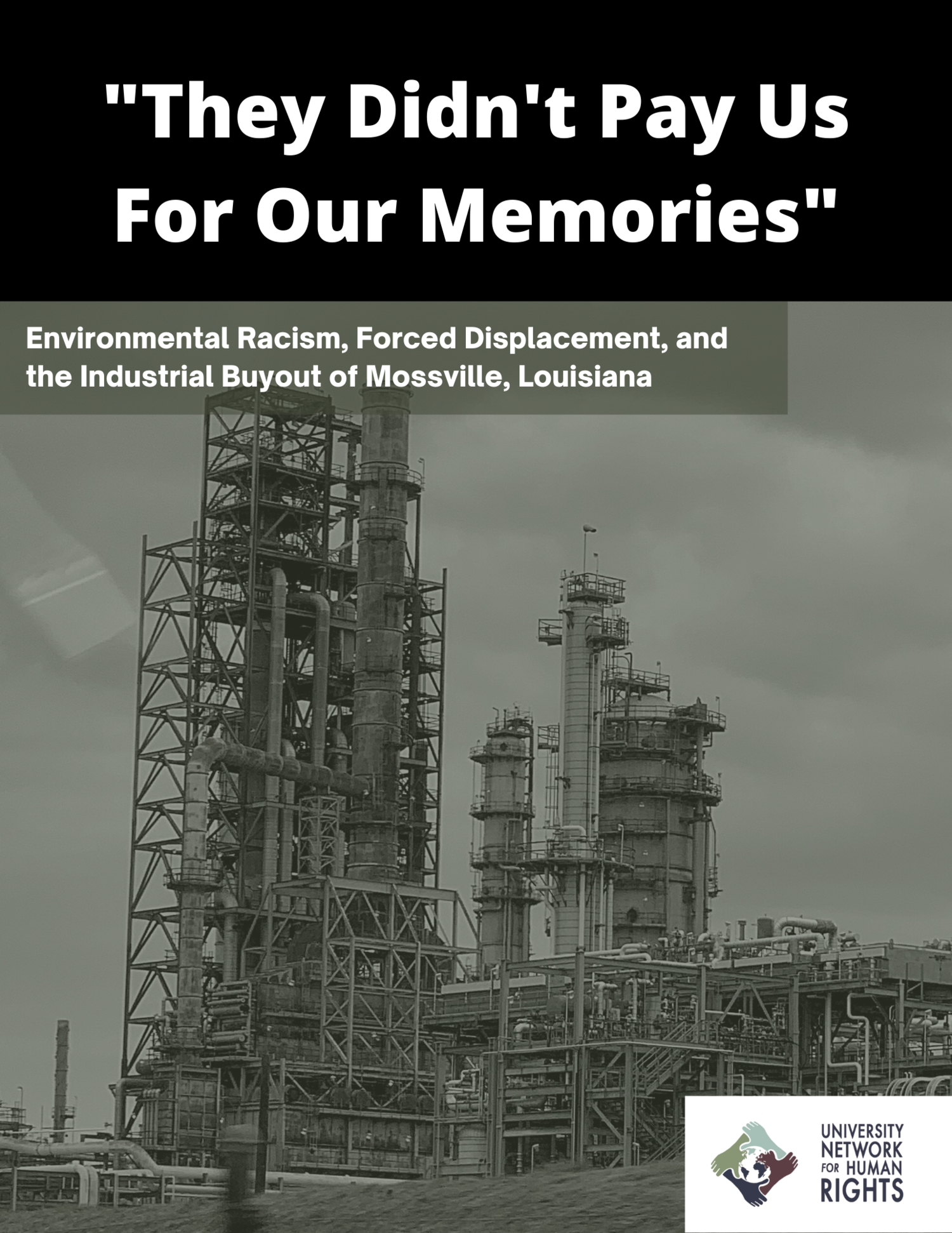Forced Displacement in Mossville
Last updated March 2023
Founded over 200 years ago by formerly enslaved people and their families, the community of Mossville, Louisiana is one of the earliest settlements of free Black people in the U.S. South. Since the 1940s, over a dozen industrial facilities—including a chemical complex owned by South African fossil fuel company Sasol—have steadily encroached on the community’s historic boundaries.
VICE World News released a 20-minute documentary featuring our work in Mossville.
In 2012, Sasol announced plans to expand its existing complex by building two new facilities—an ethylene cracker and a gas-to-liquid plant—even closer to Mossville’s fenceline. The following year, Sasol launched a “Voluntary Property Purchase Program” for residents of two areas that bordered the expanded footprint of the chemical complex: A section of Mossville and the entire predominantly white neighborhood of Brentwood. Mossville and Brentwood residents were eligible to sell their properties to Sasol and relocate.
In the ensuing years, as the vast majority of Mossville residents participated in the program and relocated, Sasol framed the buyout as a “blessing” for Mossville and declared it “the most generous program in history.”
In partnership with the Concerned Citizens of Mossville, the University Network investigated and released a report documenting (1) how Mossville residents experienced the Sasol buyout; (2) the potential role of race in determining relative buyout offers for Mossville residents and residents of predominantly white areas; (3) whether the buyout conformed with international guidelines and best practices for industrial buyouts; and (4) whether the buyout was, indeed, “the most generous in history.” Through qualitative analysis of in-depth, semi-structured interviews with former Mossville residents who participated in the buyout program and relocated, we found that many Mossville residents experienced the buyout as forced displacement and suffered trauma and other psychological harm from their dislocation. Our quantitative analysis of property records revealed that property transaction values in predominantly white areas were over 80% higher than those in Mossville, strongly indicating that the buyout was racially discriminatory.

